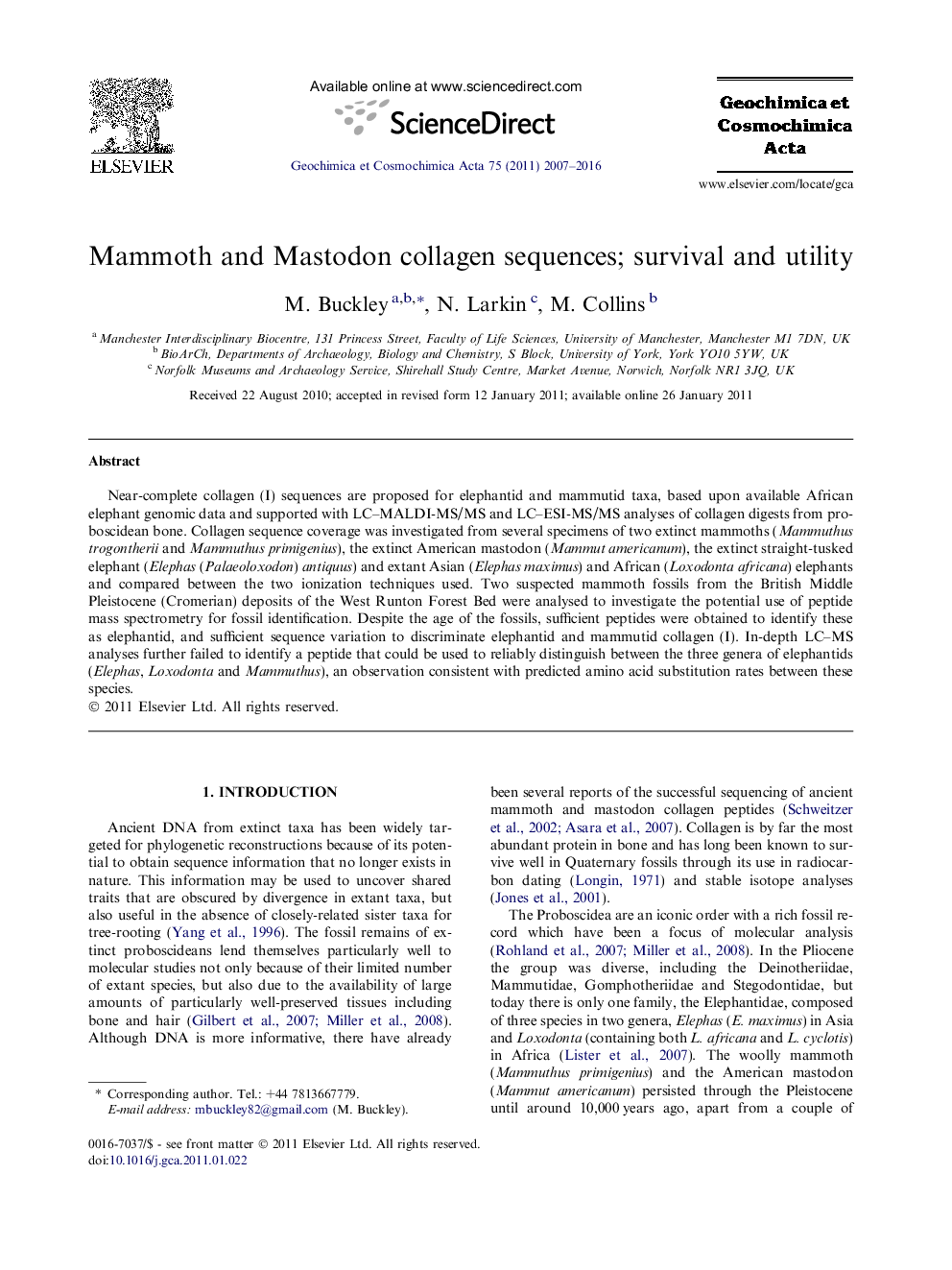| Article ID | Journal | Published Year | Pages | File Type |
|---|---|---|---|---|
| 4703518 | Geochimica et Cosmochimica Acta | 2016 | 10 Pages |
Near-complete collagen (I) sequences are proposed for elephantid and mammutid taxa, based upon available African elephant genomic data and supported with LC–MALDI-MS/MS and LC–ESI-MS/MS analyses of collagen digests from proboscidean bone. Collagen sequence coverage was investigated from several specimens of two extinct mammoths (Mammuthus trogontherii and Mammuthus primigenius), the extinct American mastodon (Mammut americanum), the extinct straight-tusked elephant (Elephas (Palaeoloxodon) antiquus) and extant Asian (Elephas maximus) and African (Loxodonta africana) elephants and compared between the two ionization techniques used. Two suspected mammoth fossils from the British Middle Pleistocene (Cromerian) deposits of the West Runton Forest Bed were analysed to investigate the potential use of peptide mass spectrometry for fossil identification. Despite the age of the fossils, sufficient peptides were obtained to identify these as elephantid, and sufficient sequence variation to discriminate elephantid and mammutid collagen (I). In-depth LC–MS analyses further failed to identify a peptide that could be used to reliably distinguish between the three genera of elephantids (Elephas, Loxodonta and Mammuthus), an observation consistent with predicted amino acid substitution rates between these species.
